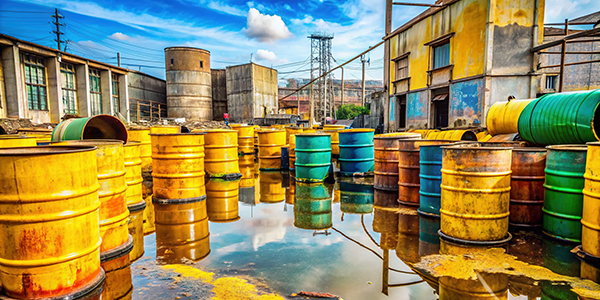
12 May Navigating PCB Remediation: USEPA and NJDEP Compliance
Reading Time: 3 minutesEnvironmental regulations are often negotiable. And because dealing with PCB compliance can be very expensive, it is important for your environmental consultant to be well-versed in the applicable regulations so they are able to advocate on your behalf. This article takes a look at a recent complex PCB contamination project under the regulatory control of two agencies to demonstrate how your environmental consultant can help negotiate a more favorable outcome with regulators.
A Brief History of PCBs
From the 1930s through the 1970s, Polychlorinated Biphenyls (PCBs) were widely used for commercial and industrial purposes in the United States. PCBs are non-flammable and highly stable, even at high temperatures. Consequently, they were commonly used as coolants and insulating fluids in transformers. Because of those qualities, they were also used in capacitors, older fluorescent light ballasts, and some hydraulic oils. Eventually, PCBs were also used in lubricating oils, cutting oils, paints, cements, pesticide extenders, flame retardants, sealants, caulking, adhesives, waterproofing, and more. In short, the presence of PCBs is ubiquitous, and they are often found on properties where they wouldn’t necessarily be expected.
PCBs are a unique group of chemicals regulated by both the United States Environmental Protection Agency (USEPA) under the Toxic Substances Control Act (TSCA) and by the New Jersey Department of Environmental Protection (NJDEP) under the Spill Compensation and Control Act. This differs from most other chemicals and chemical groups in New Jersey in that it requires property owners and responsible parties to comply with both sets of cleanup regulations mandated by two different regulators.
Advocacy is Key
So, if PCBs are so common, environmentally persistent, and toxic, how can there be regulatory latitude? That’s where advocacy comes in. To illustrate this point, we reference a project where ESA is actively remediating a former industrial establishment in Essex County, NJ, where PCBs were identified at concentrations in concrete and soil exceeding the USEPA remediation standard of 1 part per million (ppm), the NJDEP Residential Ingestion-Dermal Soil Remediation Standard (RID-SRS) of 0.25 milligrams per kilogram (mg/kg), and the NJDEP Non-Residential Ingestion-Dermal Soil Remediation Standard (NRID-SRS) of 1.1 mg/kg).
Required to comply with both the USEPA and NJDEP PCB cleanup regulations, the property owner hired ESA to navigate this challenging dual-compliance process. Through the site investigation, PCBs were found to be widespread across the former operational area of the industrial building. Because USEPA’s TSCA Subpart N specifies that initial characterization sampling must be conducted using 3-meter grids, many samples would have been required from multiple depth intervals for collection and analysis. However, ESA sought a pre-characterization meeting with USEPA to discuss both a reduced sampling strategy and an innovative remedial strategy. ESA achieved both objectives, with USEPA and ESA agreeing on a Self-Implementing Cleanup and Disposal Waste Plan (SIP) to remediate soil and a Performance-Based Cleanup (PBC) and Disposal option to remediate the concrete.
Specifically, ESA received regulatory approval to allow PCB-impacted soil to remain in place beneath a cap designed using engineering controls that are consistent with both regulator’s specifications. PCB-contaminated concrete floor slab was completely removed and disposed off-site at a TSCA landfill in Michigan. The property will have a site-wide Deed Notice and a combination of a low-permeable cap, as well as fencing and signage to restrict access. Best of all, the final remediation will render the property High Occupancy Use under TSCA, enabling the property to be used for either commercial or industrial purposes. As a result of these negotiations and actions, ESA saved the client a large sum of money and increased the return on their investment.
ESA tirelessly explores avenues to advocate for the best interests of our clients. Ask ESA how we can help you achieve similar results with your projects.



